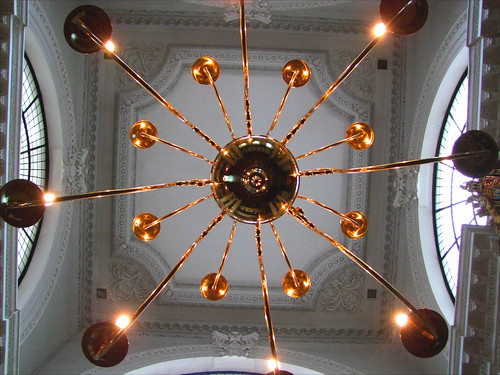| |
|
|
|
|
Opinions vary greatly as to the merits of this church,
observed Margaret Tabor in her splendid little 1924
volume London City Churches, a review of all
those churches in the City built up to the end of the
18th Century. Some critics point to it as an
illustration of the lack of genius of Wren's pupils...
others find "much refinement" in the north
front, and admire the classical details... The
clanging quotation marks that drop around the words 'much
refinement' probably tell us all we need to know about Ms
Tabor's opinion. The pupil of Wren who was lacking in
genius on this occasion was Nicholas Hawksmoor of course,
who is today recognised as quite the most innovative
English urban church architect of the 18th Century. That
Ms Tabor was not without allies is reflected in the fact
that on several occasions this building has been
threatened. In 1863 an application was made for its
demolition, so that the land could be used for the
construction of Bank underground station. The
parishioners fought off the attempt (in the event, the
station was built in the crypt, and the neo-classical
screen now hosting a Starbucks to the south of the church
was built as the station entrance). In 1919, the Diocese
of London's Commission into City Churches recommended St
Mary Woolnoth as one of nineteen churches for demolition,
the proceeds going to the construction of new churches in
the suburbs.St Mary
Woolnoth's superb location at the meeting point of
Lothbury and King William Street is of course the main
reason for these periodic avaricious attempted land
grabs, but it must be said that over the years there are
many people who haven't really 'got' St Mary Woolnoth.
The purity of the Classical form is undoubted - how the
Victorians must have hated it! - but that box of an
interior, unrelenting in its mathematical perfection, is
easier to admire than to love. When the galleries were in
situ and before the high box pews were replaced it must
have been a claustrophobic experience sitting here on a
Sunday, despite the light from above. Sometimes I take
people in here and it blows them away, it takes their
breath away. It doesn't do that to me. Perhaps I, too, am
one of the people who don't really get St Mary Woolnoth.
Quite what TS Eliot thought of it I
don't know, but his own memories of working in the City
which weave their way into his masterpiece, The Waste
Land, recalled the church very precisely:
Under the brown fog of a winter
dawn,
A crowd flowed over London Bridge, so many,
I had not thought death had undone so many.
Sighs, short and infrequent, were exhaled,
And each man fixed his eyes before his feet.
Flowed up the hill and down King William Street,
To where Saint Mary Woolnoth kept the hours
With a dead sound on the final stroke of nine.
One of the rectors here at the end
of the 18th Century was the hymn writer John Newton.
Newton had been a slave trader in an earlier part of his
life, but repented and became a vocal opponent of the
trade. He is buried here, and his epitaph, although fully
in the language of early 19th Century pious memory, is
still rather moving: John Newton, clerk, once an
infidel and libertine, a servant of slaves in Africa, was
by the rich mercy of our Lord and Saviour Jesus Christ,
preserved, restored, pardoned and appointed to preach the
Faith he had laboured long to destroy.
Simon Knott, December 2015
location: King William Street 4/047
status: working parish church
access: open Monday to Friday, services Sunday
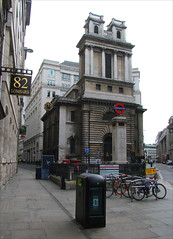 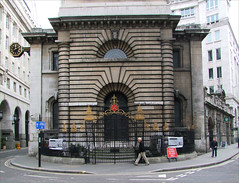  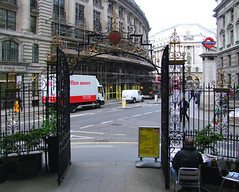 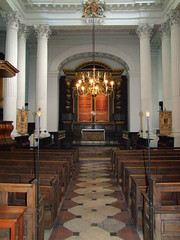 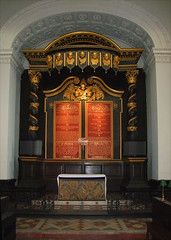 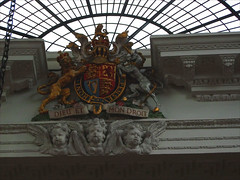 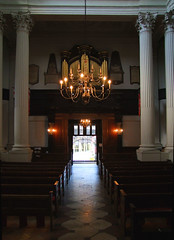 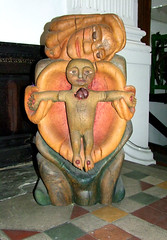 > > 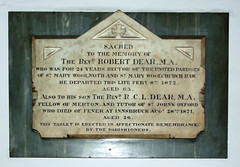 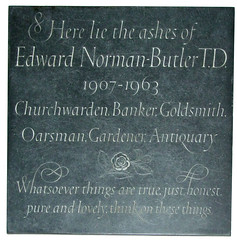 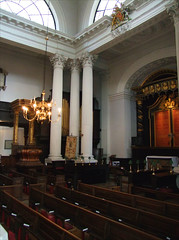 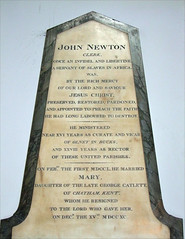 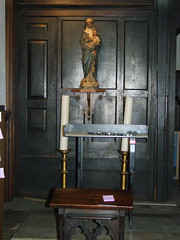 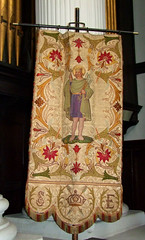 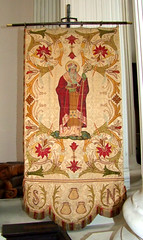 > > 
Commission
from Amazon.co.uk supports the running of this site
|
|
|
|
|
|


